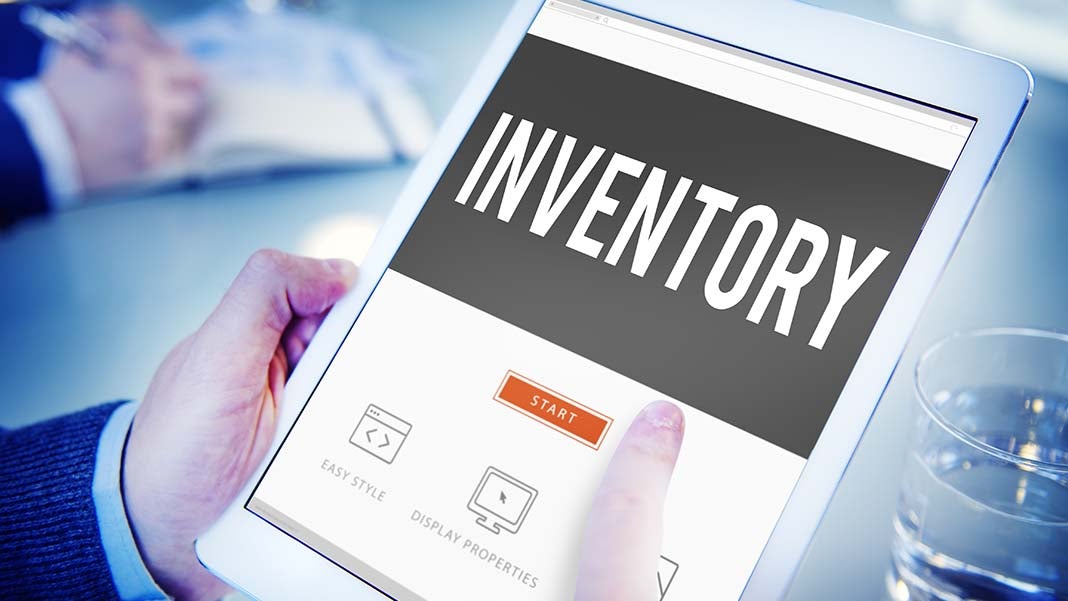
We’ve come a long long way. And I’m not talking about the evolution of technology over the last century, I’m talking about the last decade.
The tech solutions that are sitting at our fingertips are nothing short of a modern marvel. From trading in your order sheets for mobile ordering platforms to automating your payroll, tech is letting small and large business managers alike sleep sounder every night.
Whether you decide to utilize them or not, every restaurant, no matter how big or small, has a toolkit full of shiny tech solutions, ready to be put to good use.
Today we’re going to take a look at one of the many power tools available to your business. That tool is inventory management.
Starting at Square One
First thing’s first, let’s dissect inventory management into more digestible sections. Inventory management is the practice of specifying the placement and condition of stocked goods. It’s also the pinnacle of behind-the-scenes operations.
Everything that happens in the front of the house is undoubtedly a reflection of your inventory management:
- For restaurants, this means keeping track of how many goods, products, linens, and ingredients you have sitting on your shelves (hopefully not gathering dust).
- The way you manage your supply network and how you handle production and product stock will all depend on the inventory management system you have in place.
A lot of factors come into play to create a solid inventory management strategy, but there is only one key ingredient—forecasting.
- Forecasting is how you determine how much stock you’ll need by a certain deadline.
- Mapping out how much inventory you’ll need is how you set your par and on-hand levels.
(Par levels being the minimal amount of inventory you should have at any given time and on-hand being the actual quantity available.)
With forecasting in mind, let’s dive into some common practice methods of inventory management.
Best Practices of Decades Past
The good old pen and paper. The king and queen of “If it isn’t broken, don’t fix it.” Restaurant managers and operators have been using paper and pen since the dawn of inventory because, quite honestly, it works. It’s a nuisance and a liability, but it works.
Although there are a handful of problems with the “clipboard” method, the biggest inefficiency is the inability to sync up with your other back of the house operations to create a wholesome, integrated inventory management system. You can’t sync up pen and paper with finances and customer relationship management (CRM), which means you can’t track trends and/or deliver actionable forecasts.
As you grow your business, your inventory will be growing right there with you. Supply managers will often expand their inventories but seldom follow through in regard to upgrading their system. Older systems typically can’t keep up with higher demand and increased complexity, and therefore should be replaced. This doesn’t only refer to just pen and paper, but all outdated solutions that can’t keep up with your business scaling.
The Challenges
The largest red flag with inventory management is negligence. Time is precious. With so many consumer-facing priorities that demand your attention, it’s extremely easy for your back-of-house operations to keep running sub-optimally and collect cobwebs.
But, adopting a newer tech solution does not mean you’re out of the woods quite yet. Just as you have a strategy to address your customers/clients/users needs, your inventory requires a similar tactical approach.
According to Restaurant Resource Group, having an inventory system in place to track how much you’re spending is the only way to identify where extra spending is taking place and ensure that it gets slashed in the following months.
“For a restaurant with food sales of $50,000/month, an inventory difference of $1,000 between the beginning and end of the month, can translate into a variance of 2%. This disparity represents half the total annual profit of a typical full-service restaurant! You simply cannot manage your food costs if you do not know what they are, and you cannot know what they are if you do not count and record your inventory variances.”
One of the most common methods of supply holding is just-in-time (JIT) management. JIT means receiving the exact quantity you need just as you need it. In theory, there isn’t much wrong with this practice. You minimize holding costs by always replenishing your supply when you run out and every unit gets used. As you may imagine, JIT requires near-impeccable forecasting, lest you run the risk of shorting yourself on a product you need on-hand. On the flip side, it can be just as costly to stockpile supplies.
The pros of JIT management:
- Protection against stock shortages.
- Bulk purchasing discounts.
- Flexibility with customer demand.
The cons:
- Capacity and storage fees.
- Unused product.
Don’t let the list fool you, the cons are far more costly than the potential gains brought forth by the pros. The only thing more inconsistent than people’s hair color these days are their buying habits.
- Stocking up on products in order to navigate future demand is essentially saying you have total faith in your consumers to stick with the same preference until you start pushing a new product.
- Not only does excess storage cost you in inventory fees, in order to dump all those extra units you’ll likely have to push discounts to get them off the floor. A double-sided cost is just about any supply manager’s nightmare.
The trick to a substantial and effective inventory management system is balance.
- Having a forecasting formula that lets you track trends and analyze where the market is headed is vital to having a fluctuating amount of supply.
- Achieving a perfect inventory (every item ordered is sold) is definitely not a task that can be accomplished by implementing just any tech solution, but that doesn’t mean you shouldn’t try.
Inventory Management in 2016
To realize maximum efficiency, you’re going to need to integrate your inventory management with some fancy new tech. Today’s tech solutions are designed with small businesses in mind. This means accessing an easy-to-use platform that requires little setup, allowing your business to carry on with little lag time.
Hospitality and procurement platforms, like BlueCart, exist to accommodate the needs of a supply manager by offering a streamlined ordering experience and a robust inventory management feature.
Using BlueCart as an example of a powerful inventory tool, here are some of the functions that’ll help you ditch the pen and paper forever:
- Create, easily edited, custom inventory sheets, that let you keep track of the key items you need to have in stock.
- Eliminate the need for order sheets by placing orders right from the app.
- Set par and on-hand levels on the spot.
- Quickly determine when and what to order.
- Reorder with just one click.
Another key ingredient—forecasting:
- Access detailed graphs showing you inventory levels and trends over time that help you optimize your future inventory levels and lower food waste.
If you have questions about inventory management for your restaurant or would like to learn more about BlueCart, please visit our website where we also have convenient online chat. If you’re ready to join the BlueCart family, please head to the front of the line!
 Author: Creator of content and minion of marketing at BlueCart, Will Harmon is a marketing associate who has set out to master all the lessons the hospitality industry has to offer. When he’s not playing with new tech and learning about procurement, you can find him playing with stray cats and hunting for wild pizza.
Author: Creator of content and minion of marketing at BlueCart, Will Harmon is a marketing associate who has set out to master all the lessons the hospitality industry has to offer. When he’s not playing with new tech and learning about procurement, you can find him playing with stray cats and hunting for wild pizza.












